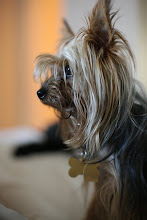 A pincho (Spanish; literally, thorn or spike) or pintxo (Basque) is the name of certain snacks typically eaten in bars, traditional in northern Spain and especially popular in the Basque country.
A pincho (Spanish; literally, thorn or spike) or pintxo (Basque) is the name of certain snacks typically eaten in bars, traditional in northern Spain and especially popular in the Basque country.  Originating in the Basque Country[citation needed], they are usually eaten in bars or taverns as a small snack while hanging out with friends or relatives; thus, they have a strong socializing component, and they are usually regarded as a cornerstone of Basque Culture and Society.
Originating in the Basque Country[citation needed], they are usually eaten in bars or taverns as a small snack while hanging out with friends or relatives; thus, they have a strong socializing component, and they are usually regarded as a cornerstone of Basque Culture and Society. They are related to tapas, the main difference being that pinchos are usually larger, served in individual portions and always ordered and paid for independently from the drinks.
They are related to tapas, the main difference being that pinchos are usually larger, served in individual portions and always ordered and paid for independently from the drinks. On the other hand, tapas are usually served along with the drinks and included in their price. In addition, tapas are served on a small dish, while pinchos are generally arranged on bread slices.
On the other hand, tapas are usually served along with the drinks and included in their price. In addition, tapas are served on a small dish, while pinchos are generally arranged on bread slices.  It is not impossible, however, to have the same item called "pintxo" in the Basque Country and "tapa" elsewhere.
It is not impossible, however, to have the same item called "pintxo" in the Basque Country and "tapa" elsewhere. They're called pinchos because many of them have a pincho (Spanish for spike), typically a toothpick —or a skewer for the larger varieties— through them.
They're called pinchos because many of them have a pincho (Spanish for spike), typically a toothpick —or a skewer for the larger varieties— through them. They should not be confused with brochettes, which in Latin America are called pinchos too; in brochettes, the skewer or toothpick is needed in order to cook the food or keep it together.
They should not be confused with brochettes, which in Latin America are called pinchos too; in brochettes, the skewer or toothpick is needed in order to cook the food or keep it together.Till tomorrow,
Love, Maia





No comments:
Post a Comment